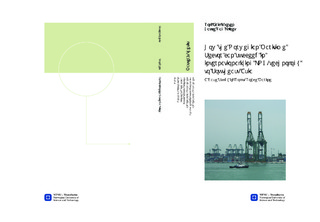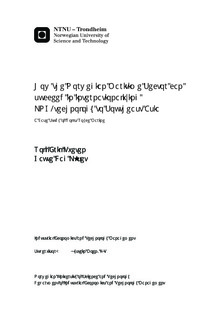| dc.description.abstract | The future potential of LNG as a bunker fuel in the Southeast Asian market is huge, although it is still immature. An emerging market for LNG-propulsion in the region creates a business opportunity for Norwegian companies delivering relevant products and services. This is a summary of the strategy that will yield the highest return on a foreign market entry with focus on export of LNG-technology in the Southeast Asian region. This thesis has assessed the gas producing and consuming countries, Brunei, Indonesia, Malaysia, Philippines, Thailand, Singapore and Vietnam, hereby referred to as the ASEAN-countries. Successful internationalization demands resource commitment and good timing, and therefore we recommend entering two countries with the purpose of exporting LNG-propulsion technology: Singapore and Indonesia. All countries can potentially adapt technology for using LNG as a marine fuel, but Singapore and Indonesia are most likely to develop small-scale LNG first. Singapore has one of the busiest ports in the world with a 20 per cent global market share for bunkering. It is a technological frontrunner in the region, and the government has taken initiatives towards establishing standards for bunkering and operations with LNG as a bunker fuel. Companies are invited to attend Joint Industry Projects on technical and commercial aspects concerning LNG-propulsion, and this is an opportunity to change the context and affect how the market will evolve. Moreover, Singapore has one of the best business environments in the world and it is easy but expensive to establish with an entity in the country. In total, Singapore is most likely to adapt LNG as a bunker fuel and consequently LNG-sponsors should be present in the country. Indonesia is the Southeast Asian region’s largest country in terms of population, area and economy. Combined with an ideal topography for small-scale LNG, Indonesia is the potentially largest market for LNG-technology in the region. LNG as marine fuel can become a reality, especially in Eastern parts of Indonesia, quite fast. The challenge in Indonesia is a complicated business environment with poor property rights as foreigners cannot have a majority share post in a local company, the red tape is extensive and corruption is a problem. However, it is possible to do ethical business in the country and at the same time succeed, but it takes adaption of strategy. Traditional Western-style strategy will not work. Long-term relations, trust and efficient alliances with local companies are required to capitalize from the Indonesian market for LNG-technology and other products and services. The figure at the right demonstrates the two most decisive variables that will determine the evolvement of the LNG bunker fuel market in Southeast Asia: • The oil-gas differential: If the price difference increase in favor of LNG, it is very stimulating • Degree of standard agreements in the LNG-technology: Ship owners rely on standards for bunkering and operations for LNG | nb_NO |

